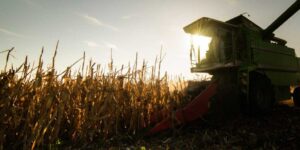Marker Assisted Selection in Plant Breeding
Purwa Khan1, Hamna Shazadee1, Sana Shaheen1, Shakra Jamil2, Rahil Shahzad2
- Centre of Agricultural Biochemistry and Biotechnology, University of Agriculture Faisalabad.
- Agricultural Biotechnology Research Institute, AARI, Faisalabad.
Marker assisted selection has revolutionized the field of plant breeding and genetics. DNA markers are short sequences of DNA having known location in chromosome. These markers are generally originated by genetic variations and mutations. A genetic marker is a DNA sequence used to identify a particular locus (although not necessarily a gene) on a particular chromosome; the marker itself may be part of a gene or may have no known function. The use of markers in laboratory started with the extraction of proteins, chemicals and DNA from plant tissues. Markers facilitate the study of inheritance of a trait or sometimes a linked gene. Markers are used to identify, map, and isolate genes, select desired genotypes, and detect genetic variation or determine genetic relationships among individuals. Markers are regions of genomes that are heritable, often easy to document, and useful for detecting genetic variation
Some commonly used types of genetic markers
- RFLP (or Restriction fragment length polymorphism)
- SSLP (or Simple sequence length polymorphism)
- AFLP (or Amplified fragment length polymorphism)
- RAPD (or Random amplification of polymorphic DNA)
- VNTR (or Variable number tandem repeat)
RFLP, is a technique that exploits variations in homologous DNA sequences. It refers to a difference between samples of homologous DNA molecules from differing locations of restriction enzyme sites, and to a related laboratory technique by which these segments can be illustrated.
Simple Sequence Length Polymorphisms (SSLPs) are used as genetic markers with PCR. An SSLP is a type of polymorphism: a difference in DNA sequence amongst individuals. SSLPs are repeated sequences over varying base lengths in intragenic regions of deoxyribonucleic acid (DNA). Variance in the length of SSLPs can be used to understand genetic variation between two individuals in a certain species.
AFLP uses restriction enzymes to digest genomic DNA, followed by ligation of adaptors to the sticky ends of the restriction fragments. A subset of the restriction fragments is then selected to be amplified. This selection is achieved by using primers complementary to the adaptor sequence, the restriction site sequence and a few nucleotides inside the restriction site fragments.
RAPD is a type of PCR reaction, but the segments of DNA that are amplified are random. The scientist performing RAPD creates several arbitrary, short primers (8–12 nucleotides), then proceeds with the PCR using a large template of genomic DNA, hoping that fragments will amplify. By resolving the resulting patterns, a semi-unique profile can be gleaned from an RAPD reaction.
VNTR (or Variable number tandem repeat) is a location in a genome where a short nucleotide sequence is organized as a tandem repeat. These can be found on many chromosomes, and to be used for personal or parental identification. Their analysis is useful in genetics and biology research, forensics, and DNA fingerprinting.
An ideal marker
It should possess the following characters
- Easy recognition of all possible phenotypes from all different alleles
- Demonstrates measurable differences in expression between trait types or gene of interest alleles, early in the development of the organism
- Testing for the marker does not have variable success depending on the allele at the marker locus or the allele at the target locus (the gene of interest that determines the trait of interest).
- Low or null interaction among the markers allowing the use of many at the same time in a segregating population
- Abundant in number
Advantages of genetic markers
Genetic markers can be used to study the relationship between an inherited diseases, and its genetic cause. It is known that pieces of DNA that lie near each other on a chromosome tend to be inherited together. This property enables the use of a marker, which can then be used to determine the precise inheritance pattern of the gene that has not yet been exactly localized. There are several applications in which DNA marker data may be useful for breeding, such as cultivar identity, assessment of genetic diversity and parent selection, and confirmation of hybrids. Markers can be used to confirm the true identity of individual plants. They are helpful in maintaining genetic purity of a species. In hybrid rice, SSR and STS markers were used to confirm purity, which was considerably simpler than the standard ‘grow-out tests’ that involve growing the plant to maturity and assessing morphological and floral characteristics.
Applications of markers in cereal breeding
Markers has the following potential applications in the cereal Breeding
- Assessing variability of genetic differences and characteristics within a species.
- Identification and fingerprinting of genotypes.
- Estimating distances between species and offspring.
- Identifying location of QTL’s.
- Identification of DNA sequence from useful candidate genes
Marker Assisted Selection
‘Major genes’ that are responsible for economically important characteristics are frequent in the plant kingdom. Such characteristics include disease resistance, male sterility, self-incompatibility, and others related to shape, color, and architecture of whole plants and are often of mono- or oligogenic in nature. The marker loci that are tightly linked to major genes can be used for selection and are sometimes more efficient than direct selection for the target gene. Such advantages in efficiency may be due for example, to higher expression of the marker mRNA in such cases that the marker is actually a gene. Alternatively, in such cases that the target gene of interest differs between two alleles by a difficult-to-detect single nucleotide polymorphism, an external marker (be it another gene or a polymorphism that is easier to detect, such as a short tandem repeat may present as the most realistic option.
These advantages can be exploited by breeders to accelerate the breeding process .Target genotypes can be more effectively selected, which may enable certain traits to be ‘fast-tracked’, resulting in quicker line development and variety release. Markers can also be used as a replacement for phenotyping, which allows selection in off-season nurseries making it more cost-effective to grow more generations per year .Another benefit from using MAS is that the total number of lines that need to be tested can be reduced. Since many lines can be discarded after MAS early in a breeding scheme, this permits more efficient use of glasshouse and/or field space—which is often limited—because only important breeding material is maintained.
Why Still Low Impact of Marker-Assisted Selection?
Following are some hindrances in broadening the impact of marker assisted selection in plant breeding
- Still at the early stages of DNA marker technology development
- Marker-assisted selection results may not be published
- Reliability and accuracy of quantitative trait loci mapping studies
- Insufficient linkage between marker and gene/ quantitative trait locus
- Limited markers and limited polymorphism of markers in breeding material
- Effects of genetic background
- Quantitative trait loci environment effects
8 .Application gap’ between research laboratories and plant breeding institutes
9 .Knowledge gap’ among molecular biologists, plant breeders and other disciplines
Conclusion
MAS could greatly assist plant breeders in reaching this goal although, to date, the impact on variety development has been minimal. For the potential of MAS to be realized, it is imperative that there should be a greater integration with breeding programs and that current barriers be well understood and appropriate solutions developed. The exploitation of the advantages of MAS relative to conventional breeding could have a great impact on crop improvement. The high cost of MAS will continue to be a major obstacle for its adoption for some crop species and plant breeding in developing countries in the near future. Specific MAS strategies may need to be tailored to specific crops, traits and available budgets. New marker technology can potentially reduce the cost of MAS considerably
References
- Ahmadi N, Albar L, Pressoir G, Pinel A, Fargette D, Ghesquiere A. Genetic basis and mapping of the resistance to rice yellow mottle virus. III. Analysis of QTL efficiency in introgressed progenies confirmed the hypothesis of complementary epistasis between two resistance QTLs. Appl. Genet. 2001;103:1084–1092. doi:10.1007/s001220100642
- Allard R.W. 2nd edn. Wiley; New York, NY: 1999. Principles of plant breeding.
- Beavis W. QTL analyses: power, precision and accuracy. In: Paterson A.H, editor. Molecular dissection of complex traits. CRC Press; Boca Raton, FL: 1998.
- Bertin I, Zhu J.H, Gale M.D. SSCP–SNP in pearl millet—a new marker system for comparative genetics. Appl. Genet. 2005;110:1467–1472. doi:10.1007/s00122-005-1981-0 [PubMed]
- Bohn M, Groh S, Khairallah M.M, Hoisington D.A, Utz H.F, Melchinger A.E. Re-evaluation of the prospects of marker-assisted selection for improving insect resistance against Diatraea in tropical maize by cross validation and independent validation. Theor. Appl. Genet. 2001;103:1059–1067.








